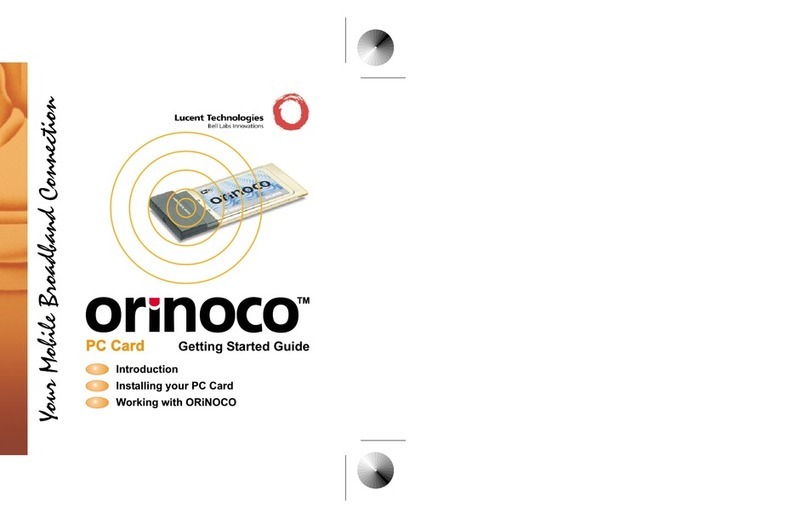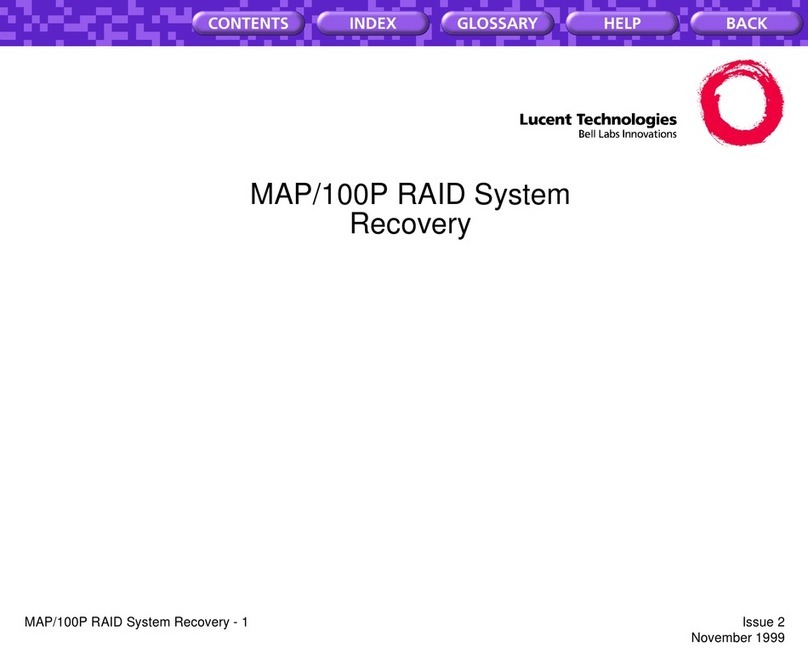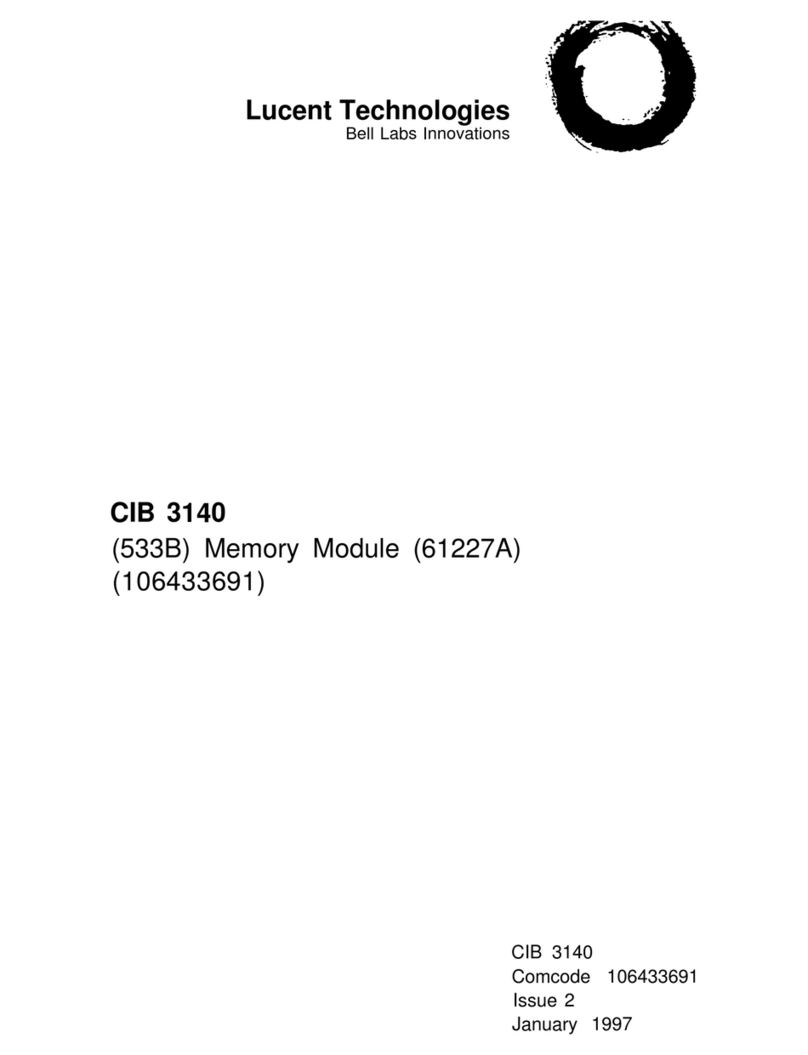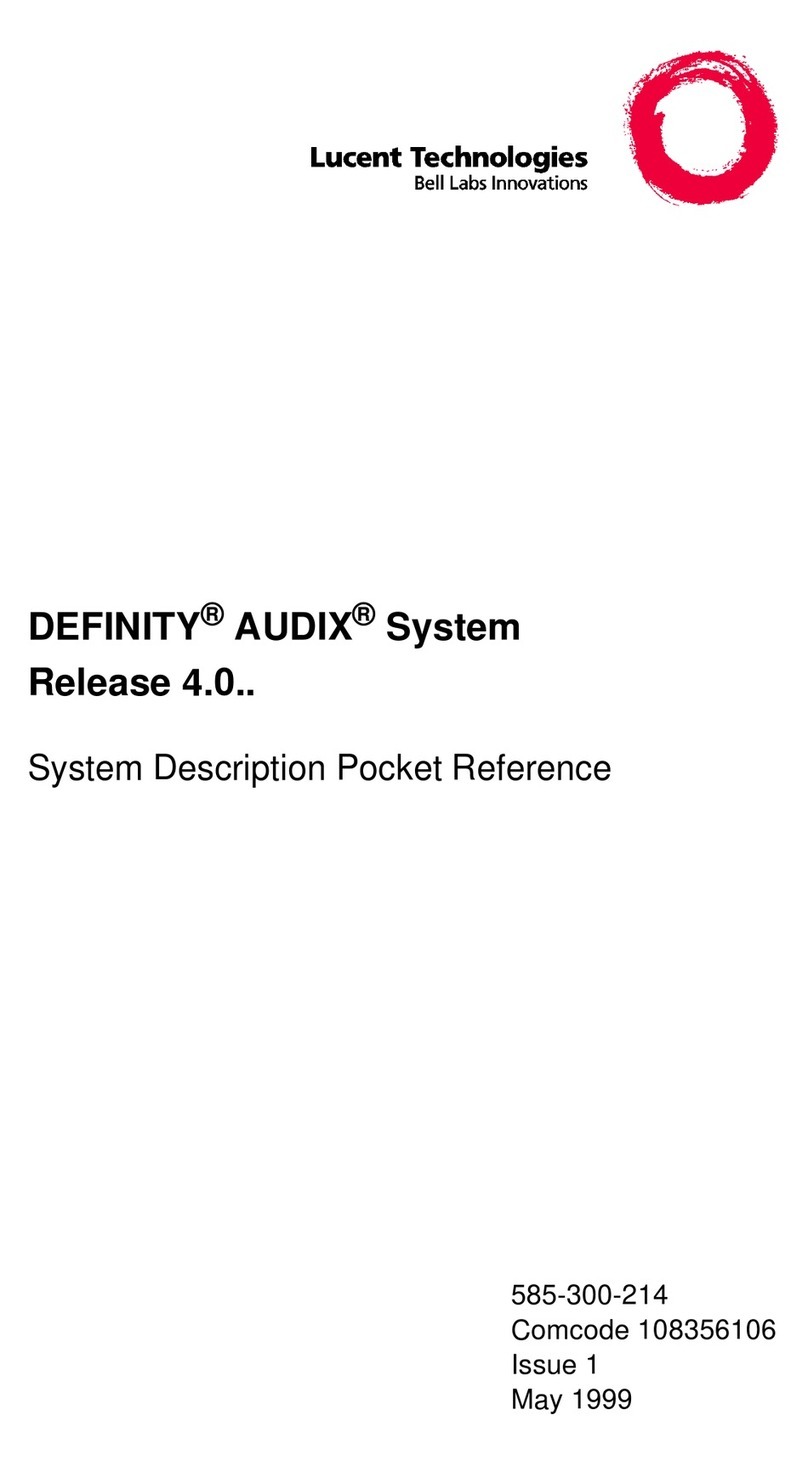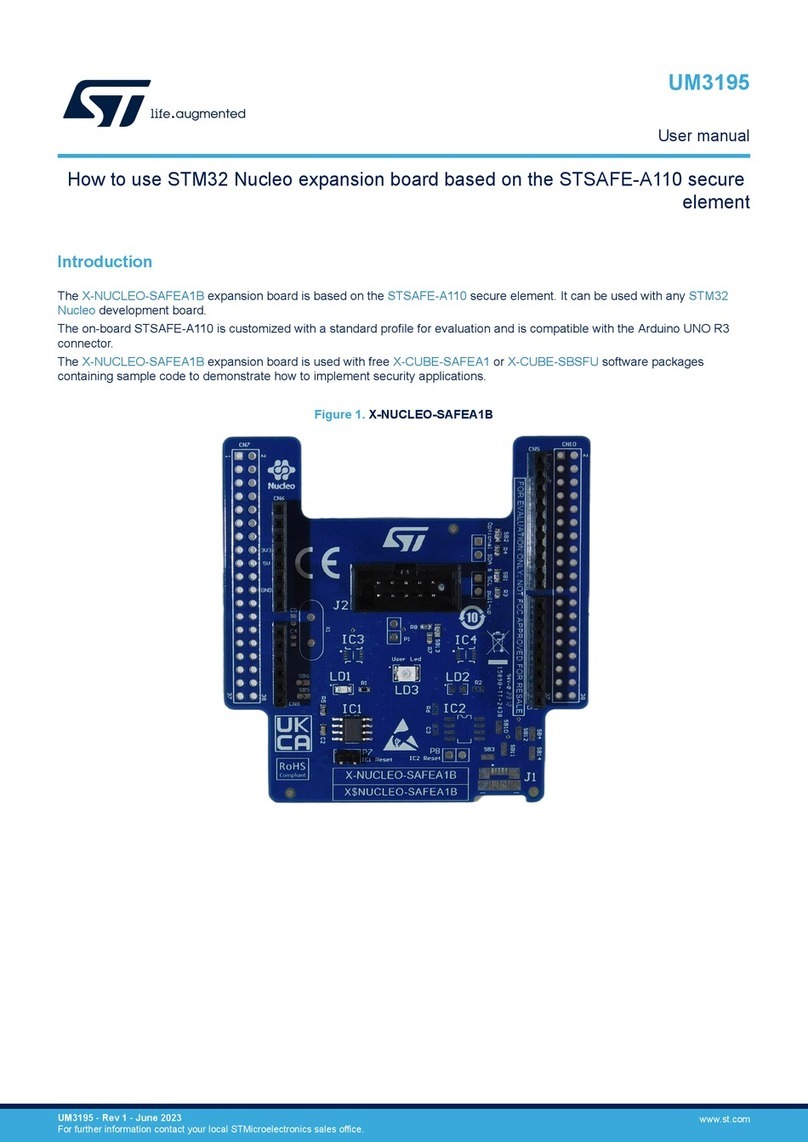
PARTNER Voice Messaging Installation and Programming
vi
4 Programming the Messaging System
Overview. . . . . . . . . . . . . . . . . . . . . . . . . . . . . . . . . . . . . . . . . . . . . . . . . . . . . . . . . . . . . . . . . . . 17
Assigning VMS Hunt Group Extensions (#505) . . . . . . . . . . . . . . . . . . . . . . . . . . . . . . . . . . . . . 17
Using PARTNER Voice Messaging
System Programming . . . . . . . . . . . . . . . . . . . . . . . . . . . . . . . . . . . . . . . . . . . . . . . . . . . . . . . . . 18
■Logging Into System Administration from an Internal Telephone . . . . . . . . . . . . . . . . . . . . . . 18
■Logging Into System Administration from Another Location . . . . . . . . . . . . . . . . . . . . . . . . . . 19
■Programming Guidelines. . . . . . . . . . . . . . . . . . . . . . . . . . . . . . . . . . . . . . . . . . . . . . . . . . . . . 19
■The System Administration Menu . . . . . . . . . . . . . . . . . . . . . . . . . . . . . . . . . . . . . . . . . . . . . . 20
Assigning a Mailbox to an Extension . . . . . . . . . . . . . . . . . . . . . . . . . . . . . . . . . . . . . . . . . . . . . 21
Assigning Automated Attendant Selector Codes . . . . . . . . . . . . . . . . . . . . . . . . . . . . . . . . . . . . 22
Recording the Automated Attendant Menu Prompt . . . . . . . . . . . . . . . . . . . . . . . . . . . . . . . . . . 23
Listening to the Automated Attendant Menu Prompt . . . . . . . . . . . . . . . . . . . . . . . . . . . . . . . . . 23
Reinitializing a Mailbox . . . . . . . . . . . . . . . . . . . . . . . . . . . . . . . . . . . . . . . . . . . . . . . . . . . . . . . . 24
Reconfiguring System Capacity
(Release 3.0 or later) . . . . . . . . . . . . . . . . . . . . . . . . . . . . . . . . . . . . . . . . . . . . . . . . . . . . . . . . . 24
Valid Configurations . . . . . . . . . . . . . . . . . . . . . . . . . . . . . . . . . . . . . . . . . . . . . . . . . 25
Reinitializing a Password . . . . . . . . . . . . . . . . . . . . . . . . . . . . . . . . . . . . . . . . . . . . . . . . . . . . . . 25
Changing the System Manager’s Password. . . . . . . . . . . . . . . . . . . . . . . . . . . . . . . . . . . . . . . . 26
5 Programming the Communications System
Overview. . . . . . . . . . . . . . . . . . . . . . . . . . . . . . . . . . . . . . . . . . . . . . . . . . . . . . . . . . . . . . . . . . . 27
Initial Programming Checklist . . . . . . . . . . . . . . . . . . . . . . . . . . . . . . . . . . . . . . . . . . . . . . . . . . . 27
Using Communications Systems Programming . . . . . . . . . . . . . . . . . . . . . . . . . . . . . . . . . . . . . 28
■Entering System Programming Mode . . . . . . . . . . . . . . . . . . . . . . . . . . . . . . . . . . . . . . . . . . . 28
Assigning Automatic Extension Privacy (#304) . . . . . . . . . . . . . . . . . . . . . . . . . . . . . . . . . . . . . 29
Assigning Automatic VMS Cover (#310). . . . . . . . . . . . . . . . . . . . . . . . . . . . . . . . . . . . . . . . . . . 29
Assigning Group Call Distribution (#206) - Option 1. . . . . . . . . . . . . . . . . . . . . . . . . . . . . . . . . . 30
Assigning Line Coverage for Extension Numbers (#208). . . . . . . . . . . . . . . . . . . . . . . . . . . . . . 30
Programming Music On Hold (#602) . . . . . . . . . . . . . . . . . . . . . . . . . . . . . . . . . . . . . . . . . . . . . 30
Assigning Night Service (#503). . . . . . . . . . . . . . . . . . . . . . . . . . . . . . . . . . . . . . . . . . . . . . . . . .31
Specifying Transfer Return Extensions (#306) . . . . . . . . . . . . . . . . . . . . . . . . . . . . . . . . . . . . . . 31
Specifying VMS Cover Rings . . . . . . . . . . . . . . . . . . . . . . . . . . . . . . . . . . . . . . . . . . . . . . . . . . .32
■For PARTNER ACS Release 3.0 or later (#321). . . . . . . . . . . . . . . . . . . . . . . . . . . . . . . . . . . 32
■For All Other Communications Systems (#117) . . . . . . . . . . . . . . . . . . . . . . . . . . . . . . . . . . . 32
Assigning VMS Hunt Delay. . . . . . . . . . . . . . . . . . . . . . . . . . . . . . . . . . . . . . . . . . . . . . . . . . . . .33
■For PARTNER ACS Release 3.0 or later (#506). . . . . . . . . . . . . . . . . . . . . . . . . . . . . . . . . . . 33
■For All Other Communications Systems (#506) . . . . . . . . . . . . . . . . . . . . . . . . . . . . . . . . . . . 33
Setting VMS Hunt Schedule . . . . . . . . . . . . . . . . . . . . . . . . . . . . . . . . . . . . . . . . . . . . . . . . . . . .34
■For PARTNER ACS Release 3.0 or later (#507). . . . . . . . . . . . . . . . . . . . . . . . . . . . . . . . . . . 34
■For All Other Communications Systems (#507) . . . . . . . . . . . . . . . . . . . . . . . . . . . . . . . . . . . 34
